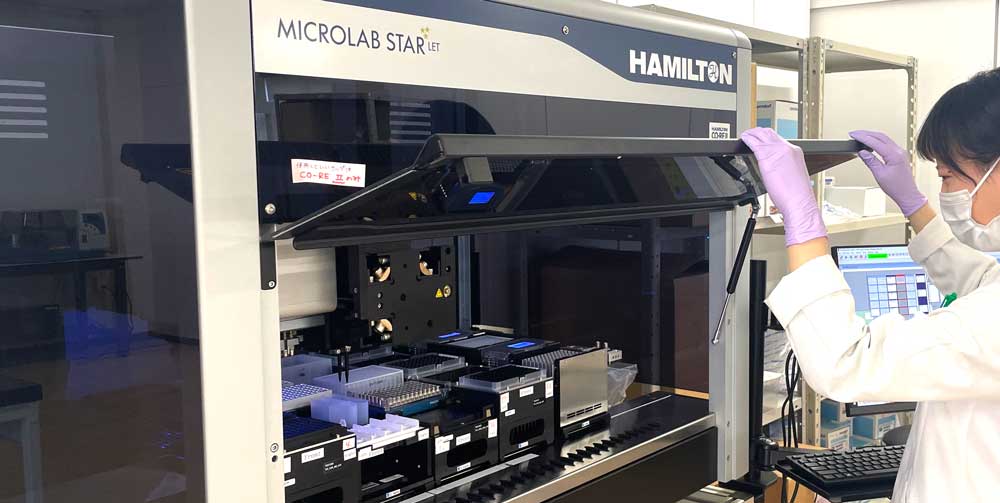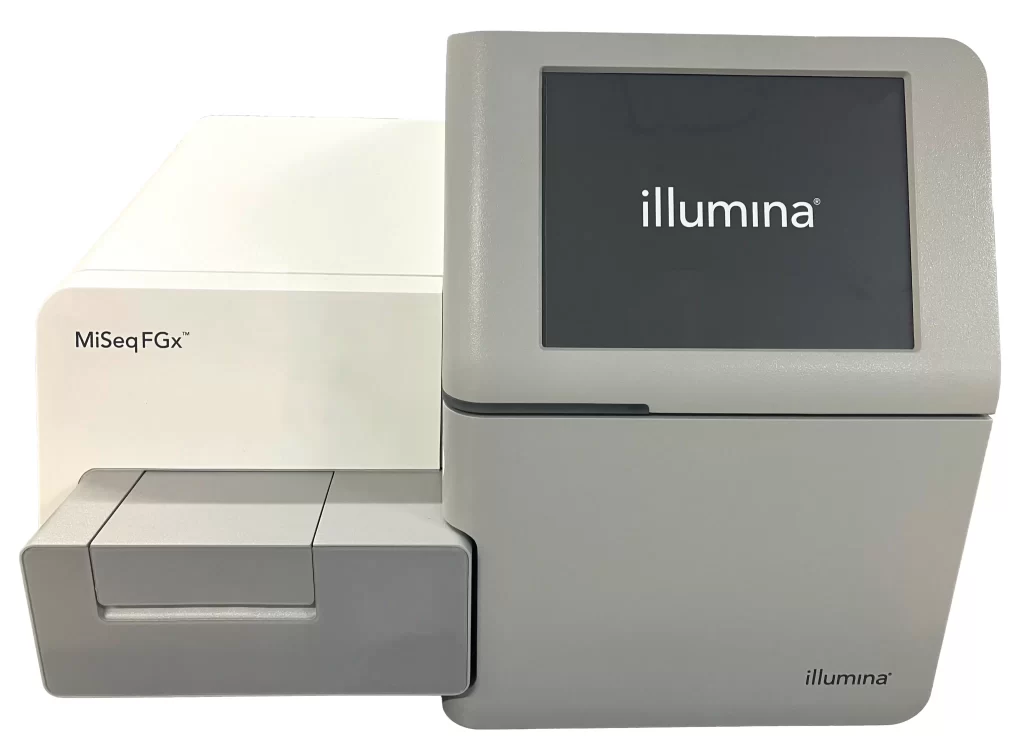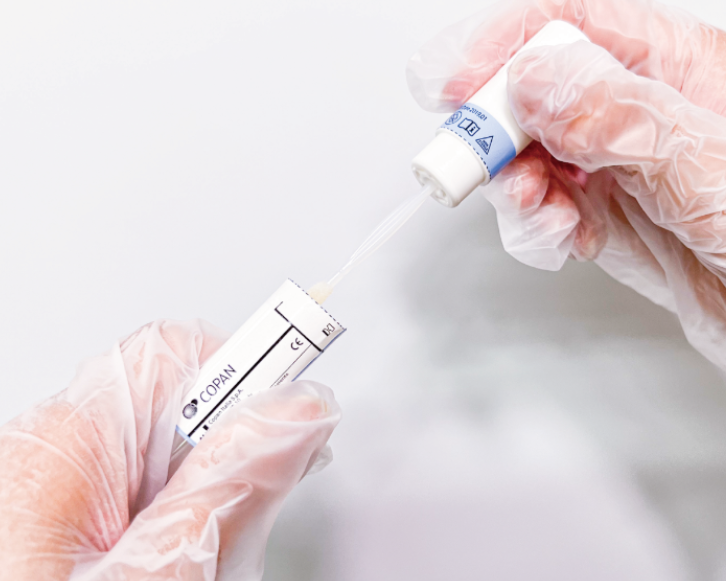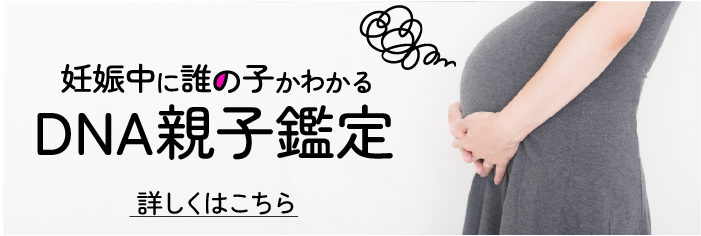
Safe, Reliable, and Rapid Prenatal DNA Paternity Testing
By implementing a cutting-edge fully automated system, Hiro Clinic has significantly reduced labor costs, making high-quality testing available at surprisingly low prices.
This automation ensures fast and accurate results while minimizing the risk of human error during the testing process.
From sample collection to testing, each specimen is tracked using a barcode management system, eliminating the possibility of sample mix-ups. Additionally, all samples are shipped directly from medical institutions, reducing the risk of loss during transport.
As testing is conducted within a certified clinic, a physician will provide thorough consultation and explanation, ensuring that patients feel safe and supported throughout the process.
Our status as a certified hygiene laboratory also guarantees stable and reliable result reporting.
Hiro Clinic uses an STR-based DNA testing method, which offers higher accuracy compared to SNP-based analysis, delivering results you can trust.
Tokyo Hygiene Laboratory
The Tokyo Hygiene Laboratory is a registered clinical testing facility in Japan and operates under the supervision of dedicated medical doctors. As a testing institution managed by licensed physicians, you can undergo testing with complete peace of mind.
Tokyo Hygiene Laboratory is a specialized genetic testing facility equipped with five next-generation sequencers. It holds certifications from CAP and ISO 9001, and undergoes regular audits by third-party organizations to ensure testing is conducted safely and reliably.

The Superiority of STR in Paternity Testing – A Comparison with SNP and the Reasons Behind It
In DNA testing, two main methods are commonly used: SNP (Single Nucleotide Polymorphism) and STR (Short Tandem Repeat). However, for applications such as paternity testing and forensic analysis, STR is generally considered superior to SNP for several important reasons:
1. Higher Power of Individual Identification
STR markers exhibit high variability between individuals due to differences in the number of repeat units of short DNA sequences. This makes STR extremely effective for distinguishing between individuals. In fact, even biological siblings often have different STR patterns, giving STR testing a strong power of discrimination.
In contrast, SNPs are based on single base-pair variations and typically have only two alleles (e.g., presence or absence of a mutation), which results in lower discriminatory power. Because SNPs have less variation across individuals, a large number of SNP markers must be analyzed together to achieve reliable identification or confirm a biological relationship.
2. High Polymorphism (Genetic Diversity)
STR markers have multiple alleles due to variable repeat counts, leading to a high degree of genetic diversity. For example, at a single STR locus, different individuals often carry different numbers of repeats. This high polymorphism means that even a small number of STR loci can yield highly accurate results in paternity and identity testing.
On the other hand, SNPs typically have only two allele options (such as A or T, or C or G), resulting in lower variability within a population. Due to this low polymorphism, SNP-based tests require many more loci to achieve the same level of accuracy in determining parentage or identifying individuals.
According to a paper published in Nature, more than 5,000 SNPs are required when using SNP testing alone.
3. Effectiveness in Paternity Testing
In paternity testing, it is essential to confirm the genetic match between parent and child. STR markers are particularly suitable for this purpose, as each child inherits half of their STR profile from the mother and half from the father. This makes it straightforward to compare the child’s STR pattern with those of both parents, allowing for highly accurate identification of parentage.
While SNPs can also be used to compare inherited genetic information, their lower individual discriminatory power means that a much larger number of SNP loci must be analyzed to achieve equivalent accuracy. As a result, STR is generally more efficient and reliable for paternity testing.
4. Forensic Standards
STR analysis is widely used in forensic applications and has been internationally standardized. For example, the FBI’s CODIS (Combined DNA Index System) utilizes a panel of 13 core STR loci for both paternity testing and personal identification. This standardization enables forensic laboratories and law enforcement agencies worldwide to operate using consistent DNA databases, making STR a globally recognized forensic tool.
In contrast, SNPs are commonly used in research and personal health-related genetic testing, but they have not yet been widely adopted as a forensic standard for paternity or criminal investigations.
5. Higher Accuracy with Fewer Loci
Thanks to their high polymorphism, STR markers enable highly accurate paternity or identity testing with a relatively small number of loci—typically between 10 and 15. In most standard paternity tests, 13 to 20 STR loci are analyzed, which is sufficient to achieve a probability of parentage exceeding 99.99%.
On the other hand, due to the smaller differences between individuals at each SNP locus, more than 100 SNPs may need to be analyzed to achieve similar accuracy. This can lead to higher costs and longer turnaround times.
What is MiSeq FGx System?

This is Japan’s first prenatal DNA paternity test using the MiSeq FGx System developed by Qiagen Inc. It is the most widely used testing instrument in the world. Since its launch in 2015, the MiSeq FGx System has been used globally, with over 100,000 tests performed. It is a trusted system developed by a highly reputable company.
Key Features:
Forensic-Specific Design:
The MiSeq FGx is engineered specifically to meet the unique needs of forensic science. It delivers highly reliable results even from trace amounts of DNA or degraded samples.
High-Precision Sequencing:
Capable of analyzing large volumes of DNA data with high accuracy in a short time, the system is widely used for individual identification, paternity testing, and forensic analysis.
Open and Flexible System:
The MiSeq FGx is compatible with existing forensic protocols and databases, making it interoperable with other forensic systems. It also allows for flexible customization to accommodate various analytical needs.
Compact and Fast:
The system’s compact size and rapid output make it ideal for use in laboratory environments requiring fast turnaround, helping reduce backlogs and enable real-time responses.
Three Types of Samples

Because we use a “triple-sample testing” method that analyzes three types of samples, the testing accuracy is higher than when using only two types of specimens. Since maternal blood contains a mix of both fetal and maternal DNA, there is a margin of error that can arise. By using three types of samples, we can isolate purely maternal DNA, enabling a more stable and precise analysis.
- Father’s DNA (buccal swab)
- Mother’s DNA (buccal swab)
- Fetal DNA (extracted from the mother’s blood)
Comparison of Testing Loci
| Eligible Testing Period | STR (Autosomal & X Chromosome) | STR (Y Chromosome) | |
|---|---|---|---|
| NIPPT | From 6 weeks of pregnancy | 28 loci | 24 loci |
In DNA paternity testing, Short Tandem Repeats (STRs) are commonly used to determine biological relationships. STRs are short sequences of DNA that are repeated in specific regions of the genome, and the number of repeats varies from person to person. This variability makes STRs highly effective for verifying parentage.
STR analysis is the standard method for paternity testing, based on the genetic principle that a child inherits 50% of their DNA from each parent.
How STR-Based Paternity Testing Works
Paternity testing is based on the fundamental genetic principle that a child inherits half of their genetic information from each parent. In STR regions, the child receives one set of STR patterns from the father and one from the mother.
By comparing the child’s STR pattern with those of the presumed parents, the degree of match can be assessed, allowing for a highly accurate determination of biological parentage.
Postnatal Paternity Testing
Postnatal paternity testing typically follows the steps below:
- Sample Collection: DNA samples are collected from the father, mother, and child. Buccal cells (from the inner cheek) are commonly collected using a cotton swab. The process is simple, painless, and non-invasive.
- STR Analysis: The collected DNA samples are analyzed in a certified laboratory, where specific STR regions are examined and compared.
- Determination of Parentage: The child’s STR patterns are compared with those of the father and mother to determine whether there is a 50% match with each parent. If a biological relationship exists, the test can confirm it with a probability of 99.99% or higher.
Use of STR in Prenatal Paternity Testing

STR analysis is also used in prenatal paternity testing, although the process differs from postnatal testing. In this case, fetal DNA is non-invasively extracted from the mother’s blood and compared with the DNA of the alleged father.
- Extraction of Fetal DNA from Maternal Blood:
From around the 10th week of pregnancy, a small amount of fetal DNA is present in the mother’s bloodstream. This DNA can be collected through a non-invasive blood draw and used for analysis. Because fetal DNA differs from the mother’s, the biological relationship between the fetus and the alleged father can be examined. - Collection of the Alleged Father’s DNA:
The father’s DNA is typically collected through a buccal swab (cheek cell sample), which is then used for testing. - STR Analysis:
STR patterns from the fetal DNA (extracted from the mother’s blood) are compared to those of the alleged father. Since the fetus inherits part of its STR profile from the father, a match can confirm paternity.
Advantages of Prenatal Paternity Testing
- Non-invasive and Safe:
The method of extracting fetal DNA from the mother’s blood poses minimal risk to both the mother and the fetus, offering a high level of safety. Compared to invasive procedures such as amniocentesis or chorionic villus sampling, this approach significantly reduces physical burden. - Early Results:
Testing is possible from the 10th week of pregnancy, allowing paternity to be determined well before birth. This enables early legal arrangements and personal preparations based on the confirmed biological relationship.
High Accuracy of STR Analysis
STR analysis is highly reliable, confirming a biological parent-child relationship with a probability of 99.99% or higher when such a relationship exists. Likewise, if there is no biological relationship, the test can exclude paternity with over 99% accuracy. This exceptional level of precision is one of the reasons STR analysis is widely accepted as solid evidence in both legal proceedings and private family matters.
Differences Between Postnatal and Prenatal Testing
- Sample Collection Method:
In postnatal testing, buccal (cheek) cells are typically used, while in prenatal testing, fetal DNA is extracted from the mother’s blood. - Invasiveness:
Postnatal paternity testing is non-invasive, and modern prenatal testing is also non-invasive, using a maternal blood draw instead of procedures like amniocentesis, offering high safety. - Timing of Testing:
Prenatal testing can be performed from the 6th week of pregnancy, allowing confirmation of paternity before birth and enabling earlier legal or personal preparations.
Not Eligible for Testing
Multiple pregnancies (twins or more)
Vanishing twin syndrome
We currently do not accept paternity testing for twin pregnancies.
Limitations of the Test
It is not possible to distinguish between individuals if identical (monozygotic) twins are involved.
Additionally, rare genetic conditions such as maternal mosaicism may occur. For these reasons, no forensic or paternity test can guarantee a result with 100% certainty.







Humans typically have two copies of each chromosome. Chromosomes 1 through 22 are called **autosomes**, and in addition to these, we have **sex chromosomes**. In total, there are 46 chromosomes. Within certain regions of these chromosomes, there are repeated DNA sequences that vary between individuals. The number of these repeats differs from person to person. For example, suppose the mother has repeat numbers 12 and 13 at a specific location on chromosome 1. At the same location, the father might have 15 and 17. There are two values for each person because humans have two copies of each chromosome, including chromosome 1. A child born from these two parents would inherit one repeat value from each parent…
of four possible combinations.
If a pattern outside of these four combinations is detected, it indicates that the biological father is different. Each genetic marker has more than ten possible repeat values. In triple-sample testing, we analyze at least 22 loci. This means the probability of error is less than 1 in 1027.